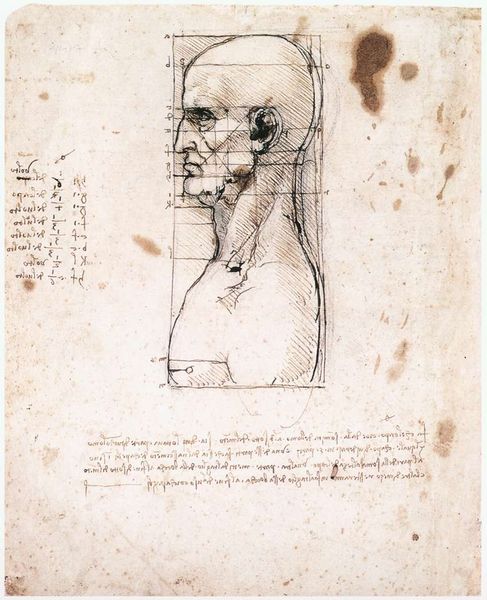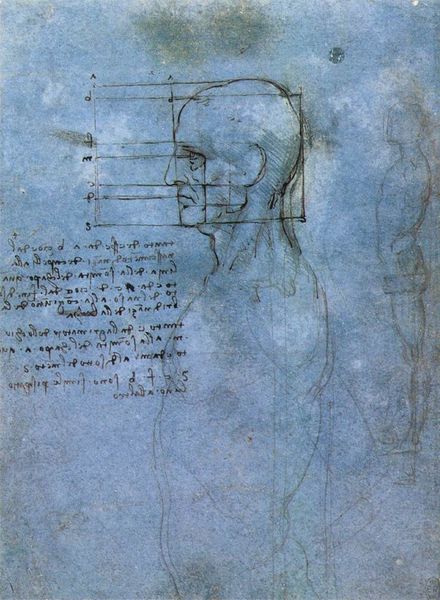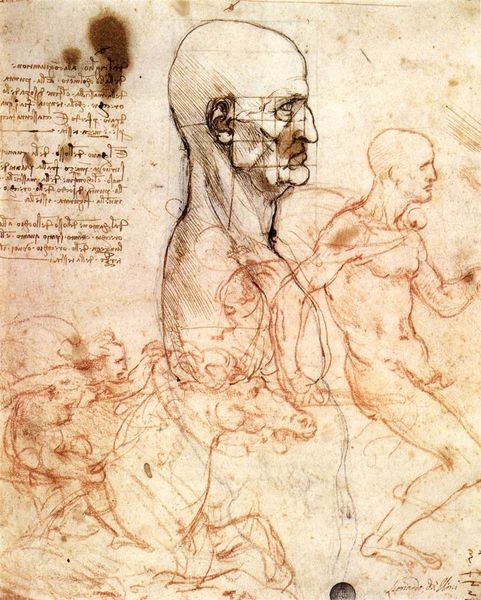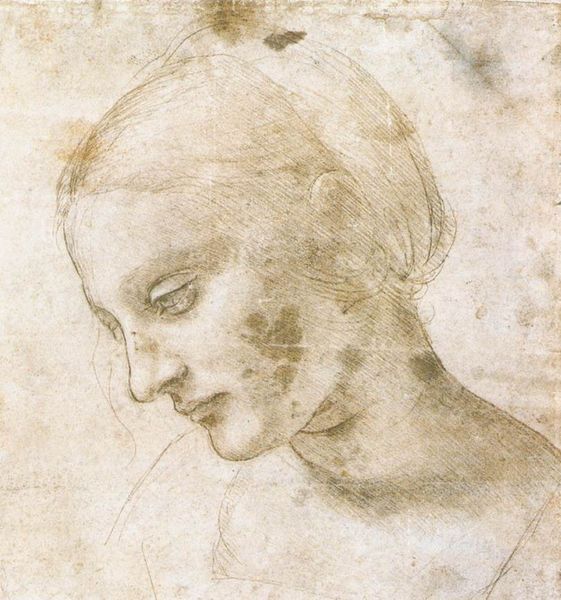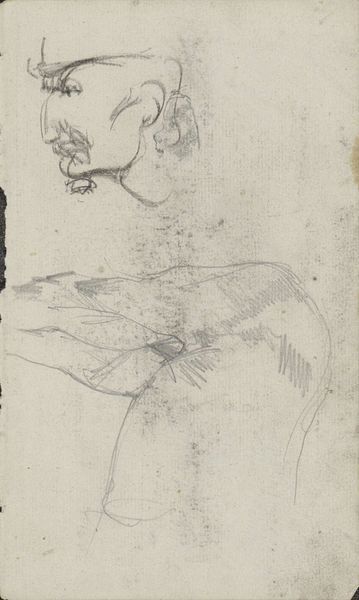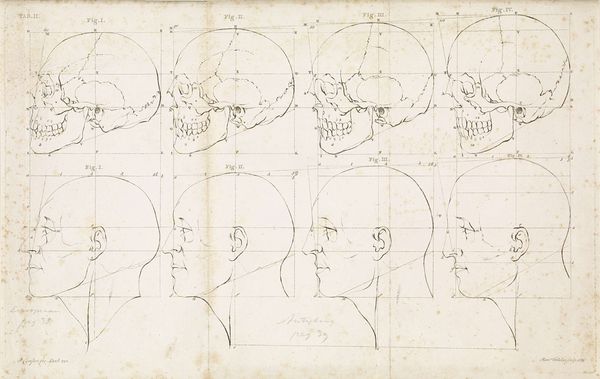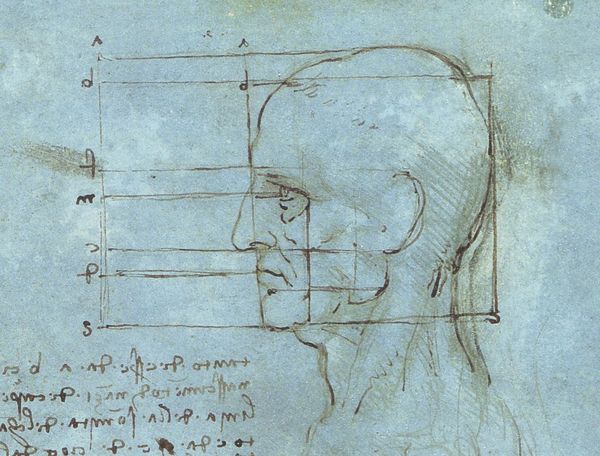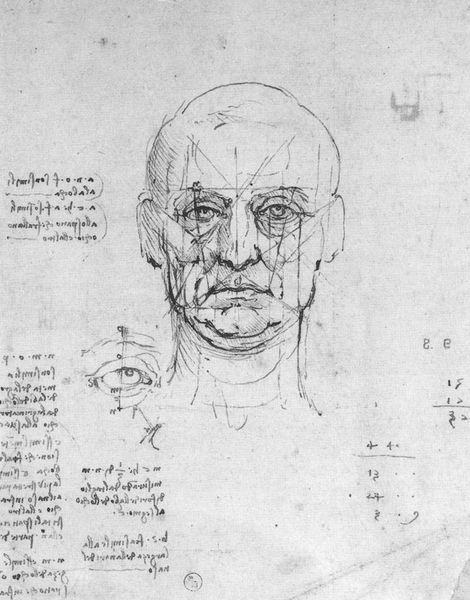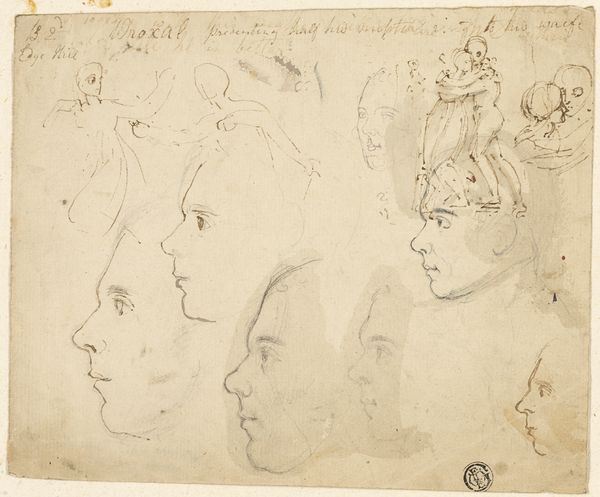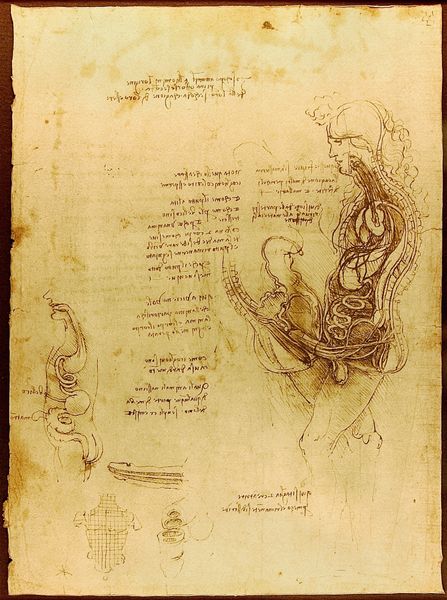
drawing, paper, ink
#
portrait
#
drawing
#
figuration
#
paper
#
11_renaissance
#
ink
#
human
#
line
#
sketchbook drawing
#
academic-art
#
italian-renaissance
Dimensions: 20.3 x 15.2 cm
Copyright: Public domain
Editor: Here we have Leonardo da Vinci's "Comparison of scalp skin and onion," created around 1489. It’s an ink drawing on paper. It’s strange to see a detailed anatomical study next to an onion! What do you see in this piece? Curator: What strikes me is how Da Vinci is not merely representing, but *thinking* through drawing. Look how he juxtaposes the human form with the structure of an onion, suggesting a correspondence, a visual analogy. How are seemingly disparate things fundamentally alike? That’s the question posed here. Editor: I see what you mean. So it’s not just about science; it’s about a deeper connection? Curator: Precisely. Renaissance thinkers often saw the universe as interconnected, reflecting grand designs on micro levels. The onion's concentric layers mirroring the structures of the scalp – it speaks to this era of seeking universal patterns. What sort of knowledge is encoded, and what meaning conveyed? Consider this a form of visual memory palace, each image a mnemonic trigger. Editor: That’s fascinating. The lines also remind me of mapping--connecting one element to the next. Almost like creating an infographic. Curator: Indeed! Visual languages, symbolic representation, and empirical observation. And in understanding Da Vinci’s approach, aren't we, in a sense, retracing his lines of inquiry across time? Editor: It’s incredible to think about how symbols can carry so much weight through history. Thanks for your insight. Curator: My pleasure. This reminds us of art’s function not just to reflect reality, but to question it, layer by layer, like the very onion Da Vinci depicts.
Comments
No comments
Be the first to comment and join the conversation on the ultimate creative platform.
